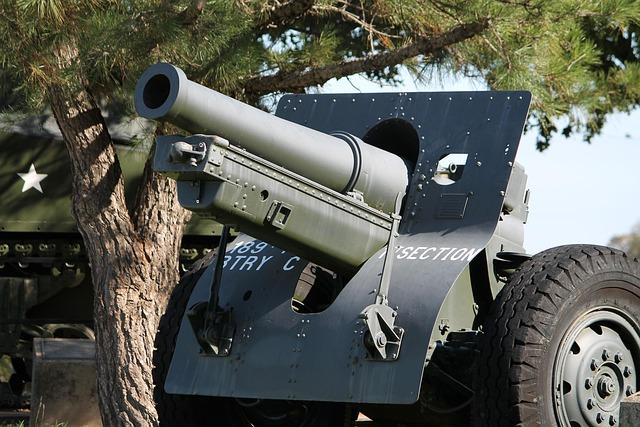In a significant demonstration of joint military capability, U.S. F-35B Lightning II stealth fighters have recently conducted flight operations from a Japanese flat-top aircraft carrier, marking a milestone in U.S.-Japan defense collaboration. The advanced fifth-generation jets took off and landed from Japan’s Izumo-class helicopter destroyer, showcasing enhanced interoperability amid rising regional security challenges. This strategic exercise underscores the deepening partnership between the two allies and highlights the evolving role of Japan’s naval assets in maintaining stability in the Indo-Pacific.
U S F 35B Jets Enhance Japan’s Maritime Strike Capabilities
The recent deployment of U.S. F-35B Lightning II jets aboard a Japanese flat-top vessel marks a significant advancement in Japan’s maritime strike capabilities. These fifth-generation stealth fighters, renowned for their short takeoff and vertical landing (STOVL) capabilities, enable rapid response and flexible operations in the Indo-Pacific region. The integration of such advanced aircraft aboard Japan’s platforms not only strengthens bilateral defense cooperation but also enhances deterrence against potential maritime threats.
Key operational advantages include:
- Enhanced Stealth and Sensor Fusion: Superior radar evasion and real-time battlefield awareness.
- Vertical Launch Capability: Ability to operate from smaller carriers or amphibious assault ships, increasing tactical deployment options.
- Multirole Combat Flexibility: Effective in air-to-air, air-to-surface, and electronic warfare roles.
| Feature | Capability | Impact |
|---|---|---|
| STOVL Operations | Short Takeoff/Vertical Landing | Launch from varied deck sizes |
| Stealth Design | Reduced Radar Signature | Increased survivability |
| Advanced Avionics | Sensor Fusion & Networking | Enhanced situational awareness |
Strategic Implications of Flight Operations from Japanese Flat Top
The deployment of U.S. F-35B aircraft on a Japanese flat top marks a pivotal shift in Indo-Pacific defense dynamics, enhancing interoperability between allied forces and showcasing advanced power projection far from the continental United States. This operational milestone enables the seamless integration of next-generation stealth fighters with regional naval assets, facilitating rapid response capabilities in a strategically sensitive environment. Furthermore, the use of a Japanese platform underscores Tokyo’s evolving defense posture and commitment to regional security, signaling joint readiness to counter emerging threats in contested waters.
Key strategic advantages include:
- Enhanced Multinational Training: Realistic joint exercises improve tactics, techniques, and procedures between U.S. and Japanese forces.
- Force Mobility and Flexibility: Carrier-borne F-35B operations expand reach without reliance on fixed bases vulnerable to attack.
- Deterrence Credibility: Demonstrates allied ability to project credible airpower swiftly in response to regional provocations.
- Technological Integration: Enables real-time data sharing and network-centric warfare capabilities on a combined task force scale.
| Capability | Benefit |
|---|---|
| STOVL Operations | Operates from smaller decks, increasing deployment options. |
| Low Observability | Enhances survivability against advanced air defenses. |
| Networked Sensors | Provides unparalleled situational awareness in multiforce operations. |
Recommendations for Strengthening US Japan Joint Air Naval Exercises
To enhance the effectiveness and interoperability of US-Japan joint air and naval exercises, it is imperative to focus on increasing the integration of command and control systems. Establishing more frequent cross-deck operations involving US F-35B aircraft aboard Japanese vessels will build familiarity and trust among personnel. Additionally, expanding real-time data sharing capabilities through advanced secure networks can optimize situational awareness during operations, allowing for rapid response to dynamic threats in the Indo-Pacific region.
Key focus areas for future exercises should include:
- Joint electronic warfare and cyber defense simulations
- Expanded amphibious assault drills with combined air support
- Increasing frequency of multinational participation to bolster regional security ties
- Enhanced logistics coordination to sustain prolonged operations
| Focus Area | Benefit |
|---|---|
| Command & Control Integration | Streamlined communications, faster decision-making |
| Electronic Warfare Drills | Improved resilience against cyber threats |
| Amphibious Assault Exercises | Enhanced joint operational capabilities |
| Multinational Participation | Stronger alliances and deterrence posture |
Concluding Remarks
As the U.S. F-35B continues to demonstrate its operational versatility from Japan’s flat-top carriers, these flight operations underscore the strengthening military cooperation between the United States and Japan. This ongoing collaboration not only enhances regional security but also showcases the advancing capabilities of next-generation naval aviation. As geopolitical dynamics evolve in the Indo-Pacific, such joint endeavors will remain pivotal in maintaining a robust and ready presence in the region.




